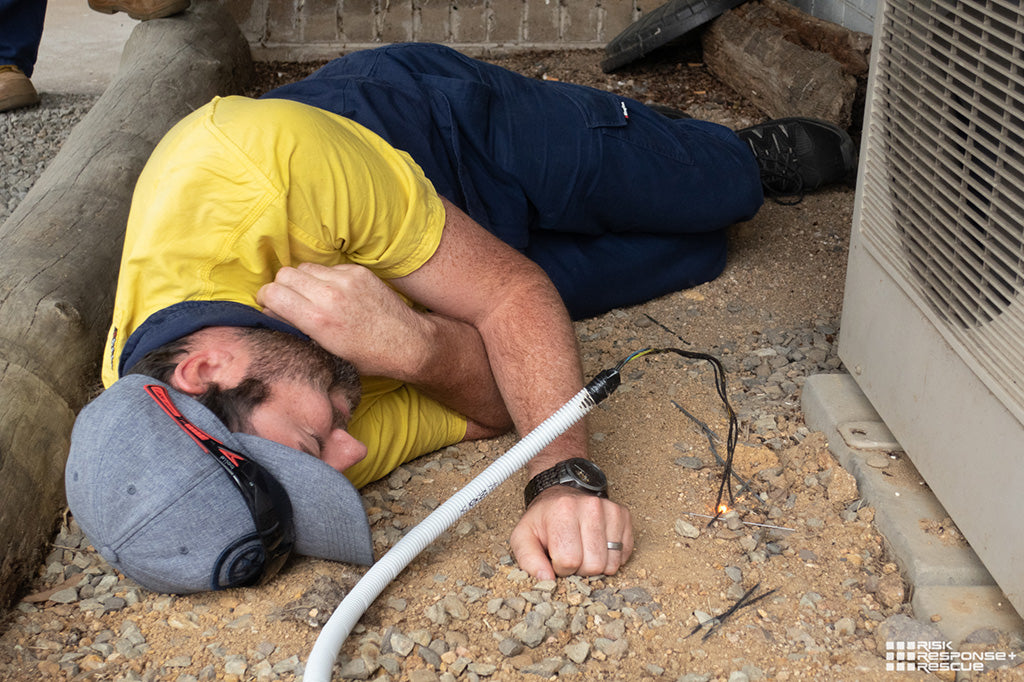Introduction
In today's busy workplace, making certain the security and health and wellness of your labor force is paramount. One aspect that commonly gets neglected is hands-on handling, which refers to the procedure of training, lugging, pushing, or drawing items. In this write-up, we will certainly first aid requirements for teachers explore efficient hands-on handling strategies that can assist keep your workforce risk-free and healthy. We will likewise talk about the relevance of first aid training, including CPR training and mental health emergency treatment, and just how these elements contribute to a much safer work environment.

Manual Handling Techniques: Maintaining Your Workforce Safe and Healthy
Manual handling strategies are essential for protecting against injuries in the workplace. Incorrect lifting strategies can lead to bone and joint problems (MSDs), which account for a substantial variety of workplace injuries. To efficiently minimize risks related to manual handling, organizations need to apply training programs that stress proper techniques.
Understanding Manual Taking care of Risks
Before diving into specific techniques, it's essential to identify the dangers involved in hand-operated handling tasks. According to research, poor lifting techniques can lead to:
- Back pain Muscle strains Joint injuries Chronic problems impacting mobility
Recognizing these risks permits companies and staff members alike to prioritize safety.
The Relevance of Training
Training plays an essential function in minimizing hands-on handling-related injuries. It's not just about knowing exactly how to lift correctly; it's additionally concerning understanding body mechanics and comfort designs. An extensive manual handling training program needs to cover:
- Proper lifting techniques Risk evaluation skills Use of tools like trolleys or forklifts
Additionally, integrating first help courses into office training makes sure that every person knows just how to react successfully in situation of an injury.
Basic Raising Techniques
Here are some fundamental techniques that every person ought to grasp:
1. Assess the Load
- Before training anything, constantly assess its weight and shape. If it seems as well hefty or awkwardly shaped, seek assistance or usage mechanical aids.
2. Positioning
- Stand close to the object. Place your feet shoulder-width apart for balance. Bend your knees while keeping your back straight.
3. Grip
- Ensure a company hold on the object. Use both hands when possible.
4. Lifting
- Lift with your legs rather than your back. Keep the things near to your body as you stand up.
5. Carrying
- Maintain a steady posture while walking. Avoid turning your body; instead, turn your entire body by moving your feet.
6. Setting Down
- Lower the object by bending at the knees again. Ensure that you position it down carefully without going down it.
Using Devices for Hand-operated Handling
Investing in devices developed for manual handling can dramatically lower injury threat. Below's a list of generally made use of tools:
|Equipment Kind|Function|| ----------------|--------------------------------------|| Trolleys|For transporting hefty things|| Lifts|For lifting people or hefty items|| Pallet Jacks|For relocating palletized loads|
Incorporating Emergency treatment Training
While minimizing risks with proper hands-on handling is critical, being planned for emergencies is equally essential. This is where first aid training enters play.
Types of Emergency treatment Courses Available
General Work environment First Aid
- Covers standard first aid skills required in different job environments.
CPR Training
- Teaches lifesaving cardiopulmonary resuscitation methods necessary during cardiac emergencies.
Corporate Emergency treatment Training
- Tailored programs particularly designed for company settings concentrating on usual workplace injuries.
Mental Wellness First Aid
- Provides abilities to aid colleagues having problem with mental wellness concerns-- a vital part frequently neglected in conventional emergency treatment courses.
Childcare Emergency treatment Course

- Focuses on reacting to emergencies involving children-- ideal for those working in educational setups or child care centers.
Online First Aid Course
- Offers flexibility for staff members to find out at their own pace while still covering all necessary content.
Creating a Society of Safety
To preserve a setting conducive to safety and security, cultivating a culture where staff members feel encouraged to speak up about dangers is essential.
1. Encourage Open Communication
Encourage employees to report risky conditions without concern of retribution; this fosters an open discussion concerning possible risks related to hand-operated handling tasks.
2. Regular Training Sessions
Hold normal workshops on manual handling strategies and refreshers on first aid courses-- keeping skills sharp ensures preparedness during emergencies.
3. Promote Psychological Well-being
Since psychological wellness plays an essential duty in total health, employers ought to promote psychological wellness awareness along with physical security measures.
FAQs
Q1: What are the indications that I require hands-on taking care of training?
A1: If workers regularly raise hefty products or record pain after raising jobs, it's time for detailed manual handling training sessions.
Q2: Exactly how often should we conduct emergency treatment training?
A2: Preferably, first aid training must occur each year; however, more constant sessions may be useful based upon office dangers or changes in staff.
Q3: Can on-line courses be as reliable as classroom-based training?
A3: Yes! Online training courses have actually come to be significantly interactive and supply useful resources-- just guarantee they fulfill qualification requirements!
Q4: What type of devices ought to our workplace invest in?
A4: Invest in trolleys, https://blogfreely.net/vesterkjdi/comprehending-the-basics-of-corporate-emergency-treatment-training-programs-0nft hoists, pallet jacks, and ergonomic furnishings-- these devices aid lessen injury from inappropriate hand-operated handling practices.

Conclusion
In verdict, understanding correct manual handling techniques is important for promoting a safe and healthy workforce atmosphere. By prioritizing extensive training-- including vital subjects like first aid courses-- you equip employees with expertise vital for both prevention and reaction throughout emergency situations like crashes associated with mishandled loads.
Remember: Safety isn't simply a plan; it's a society constructed through constant effort from every person within an organization!
By offering reliable handbooks on these practices while highlighting continuous learning with qualifications such as mouth-to-mouth resuscitation or Mental Health First Aid Courses-- firms can develop work environments where safety and security thrives!